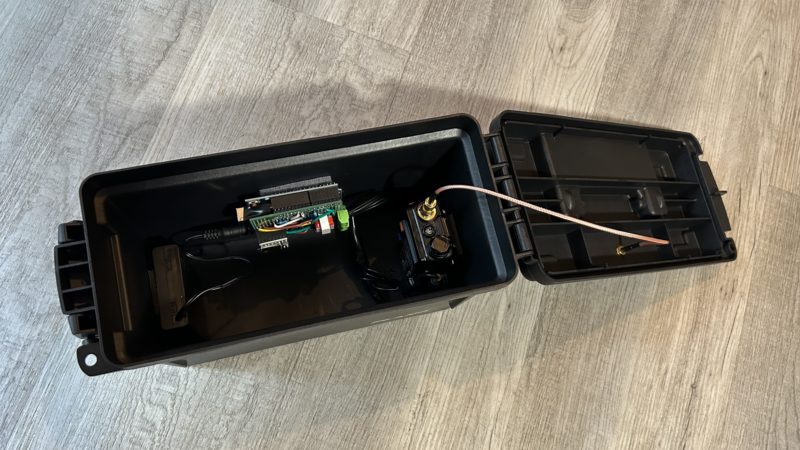This page contains information about the current KC1SLE foxhunt transmitter.
If you’ve found the fox, please email your reports to fox(at)kc1sle.com. I’d love to hear how long it took you and what equipment you used in the search.
The current KC1SLE utilizes an Arduino Uno board to control transmitter operations and a Baofeng UV-5R transceiver to transmit. The Arduino is wired to a DFPlayer mini module, which allows playback of .mp3 files contained on a microSD card. The current version of the Arduino circuit makes use of a transistor to switch the PTT in place of the previous 5v relay.
The fox supports multiple .mp3 files played in order and the ability to generate CW. Currently, the software allows for voice, CW only or both modes, though this can be changes with software modification.
The transmitter is currently using the full power (5W) of the Baofeng which should make direction finding up close quite difficult without some method of attenuation.
The software also handles DTMF decoding. To activate the fox, the DMTF code “1” must be sent on the transmitting frequency. Other tones will handle configuration changes in later revisions. The code utilizes a third-party open-source implementation of the Goertzel Algorithm to identify the DTMF codes in received audio. This has proven to work ‘mostly’ in my testing, with some tones being misidentified more than others.
By requiring activation before transmitting, the fox should be able to conserve power for a longer time. Currently, the fox is using two separate power sources – one extended life lithium ion battery on the UV-5R and one 4 AA battery pack to power the Arduino. Future iterations may consolidate power sources.
The fox and its components are houses in a cheap Plano ammo container. The antenna is a ‘roll-up’ slim-jim antenna made from TV twin lead.
If you’d like to see more, I’ve documented the various stages of building the fox and it’s components elsewhere on this blog:
